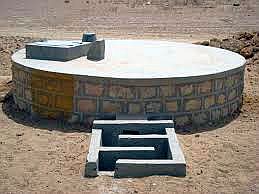What is water harvesting? Describe its relevance in the Indian context.
Civil Services Main Examination
General Studies (Paper - 2) : Model Question & Answers
 Question:
What is water harvesting? Describe its relevance in the Indian context.
(Asked in UPSC Main Year 2000)
Question:
What is water harvesting? Describe its relevance in the Indian context.
(Asked in UPSC Main Year 2000)
The Traditional Way of Water Harvesting
-
Rain water harvesting systems and water management systems have been in existence in India since time immemorial.
-
The excavations at Harappa and Mohenjodaro reveal deep rectangular constructions that were probably the earliest tanks built in India. Early people cut channels, diverted rivers, and farmed their regions. Wells had been dug in the cities of the Indus – Sarasvati Valley by the third millennium B.C., while the “Great Bath” was probably a water storage tank.
-
Kautilya’sarthashastra mentions dams and bunds that were built for irrigation during the period of Mauryan Empire.
-
The Satavahans introduced brick and ring wells.
-
Grand Anicut or Kallanai built by Karikala Chola across the river Cauvery to divert water for irrigation is still functional.
-
The Bahamani rulers introduced canal irrigation for the first time in the eastern provinces of Deccan
-
Stepwells are India’s most unique contribution to architecture. They are called vav or vavadi in Gujarat, and baolis or bavadis in Rajasthan and northern India.
Traditional way of water harvesting in different States
-
Gujarat and Rajasthan had well developed and efficient system due to their arid and desert geography. Notable among these are Paar system, Talab/Bandhis, Sazakuva, Johad, Naada, Rapat, Chandelaand Bundela tanks, Kundi, Kuis and Beris, Jhalaras, Nadis, Tobas, Baoliand Ahar Pynes
-
South Bihar had a traditional flood water harvesting system called aharpynes. Katas/Mundas/Bandhas are the main irrigation source of ancient kingdom of Gonds.
-
Dungs or Jampois are small irrigation channels linking rice fields to streams in the Jalpaiguri district of West Bengal.
-
Zings are water harvesting structures found in Ladakh. They are small tanks, in which collects melted glacier water.
-
Naula is a surface-water harvesting method typical to the hill areas of Uttaranchal.
-
Khatri is traditional water harvesting structures are found in Hamirpur, Kangra and Mandi districts of Himachal Pradesh. Kuhls are a traditional irrigation system in Himachal Pradesh- surface channels diverting water from natural flowing streams (khuds).
-
The zabo system is practiced in Nagaland in north-eastern India. Cheo- ozhil is system which bringsthe water of the river Mezil through long channel and diverted into branch channel with the help of bamboo pipes.
-
Dongs are ponds constructed by the Bodo tribes of Assam to harvest water for irrigation. These ponds are individually owned with no community involvement.
-
Meghalaya has an ingenious system of tapping of stream and springwater by using bamboo pipes to irrigate plantations.
-
In four southern states Eris have played several important roles in maintaining ecological harmony as flood-control systems, preventing soil erosion and wastage of runoff during periods of heavy rainfall, and recharging the groundwater in the surrounding areas.
data-matched-content-ui-type="image_card_stacked"
Useful Tips & Articles
तैयारी कैसे करें? |
EXAM SUBJECTS |
STUDY RESOURCESDownload Free eBooks |


